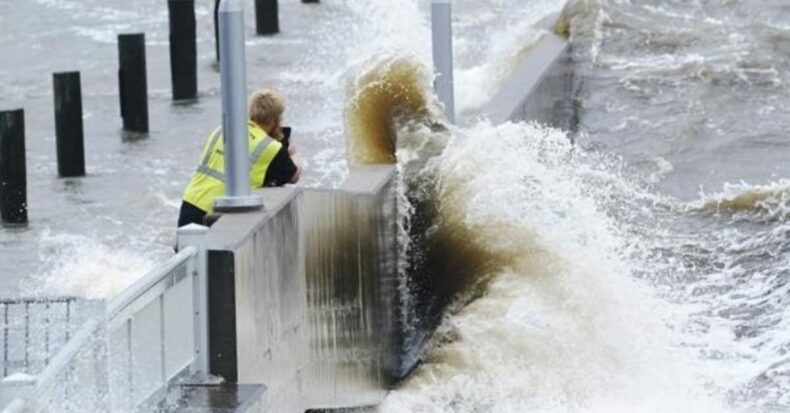Ida slammed the coastline of Southern Louisiana with wind speeds of 150 mph (240 kph) on Sunday as a Category 4 Hurricane after weakening into a Category 3 storm with sustained winds of 115 mph (193 kph) moving west of the city while threatening to unleash widespread flooding and mudslides in New Orleans.
Entergy utility of the city suffered “catastrophic transmission damage” Cleco officials reported recovery of power grid ‘will be a marathon’.
As Ida barreled through the city on Sunday evening, leaving 814,000 customers were left without power.
About 176,000 people reported power outages in the dark and dreadful Orleans.
New Orleans’s Office of Homeland Security and Emergency Preparedness tweeted, “The only power in the city is coming from generators.”
The National Weather Service wrote, “This is a PARTICULARLY DANGEROUS SITUATION. SEEK HIGHER GROUND NOW!” as they issued the direst flood alert for the south shore of New Orleans.
Flash flood warnings were issued Sunday night for almost 1 million people in New Orleans and surrounding cities.
In contrast, a “life-threatening” flash flood “emergency” was declared in some communities south of New Orleans, near the Mississippi River.
US President Joe Biden declared a major disaster in Louisiana and announced federal aid way ahead of Ida to supplement recovery efforts in affected areas.
The White House said that assistance would include grants for temporary housing and home repairs, low-cost loans to cover any uninsured property loss and also mentioned “other programs to help individuals and business owners recover from the effects of the disaster.”
The hospitals were already overwhelmed with the state of Louisiana reeling from the fourth wave of the Covid-19 pandemic, and the storm’s approach forced it to suspend all emergency medical services.
About 2,450 Covid-19 patients who were under intensive care units could not get evacuated from regional hospitals.
The loss of generator power at a hospital in Lafourche Parish where Ida first made its landfall forced medical personnel to manually assist respiratory patients with breathing while moving them to another floor, reported the state Health Department.
Mississippi River flows in reverse.
Hurricane Ida made the Mississippi River flow upstream as a storm surge from Ida pushed inland. The river reversed its course on Sunday as it flowed through Belle Chasse in Louisiana.
The National Weather Service also wrote, “Observed rainfall rates over southeastern LA have generally been 1-2 in/hr through early evening, but rates over 2 in/hr have occasionally been observed as well.”
Hydrologist Scott Perrien from the United States Geological Survey (USGS) called the reversal “extremely uncommon”.
The Hurricane surge caused the water level to rise by about seven feet at the USGS gauge in Belle Chasse.
According to the NHC, the expected rainfall between 10 to 18 inches surged, with isolated maximum levels reaching 24 inches across southeast Louisiana into southern Mississippi.
Graphics from the USGS showed the discharge of about -10,700 cubic feet per second at 12:30 (GMT-5) on Sunday.













